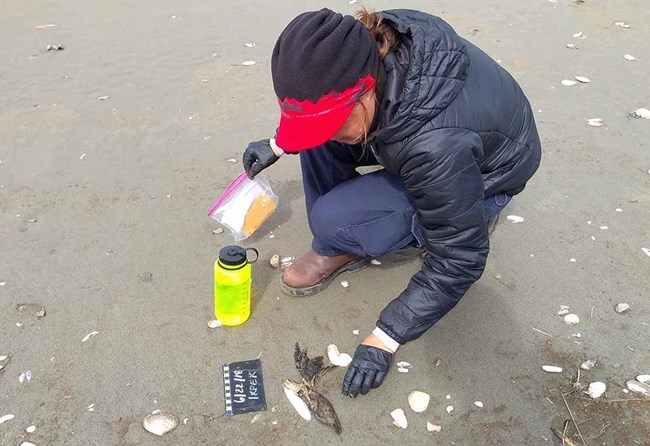
Wreck is the term used for a massive bird die-off; it seems appropriate.
Seabirds are indicators of marine ecosystem health. Since an unprecedented massive die-off of Common Murres in the Gulf of Alaska in 2015-2016, coastal communities across Alaska have annually reported dead and dying seabirds on their beaches, most recently in the northern Bering and southern Chukchi Seas. Historically, seabird die-offs are not uncommon in Alaska and often associated with strong El Niño events. In addition to frequency, these die-offs are unusual due to the number and variety of dead birds, broad geographic area affected, and the prolonged duration of events.
Recent mortality events are concerning in that they may be pointing to significant changes in marine ecosystems. Our northern oceans have experienced record-breaking, above-average ocean temperatures in recent years. Reports of dead seabirds from the Bering Strait region are concurrent with a massive marine ecological shift resulting from the loss of sea ice due to this unprecedented warming.
Seabirds eat cold water zooplankton and forage fish, which are both reliant on cold water. If smaller zooplankton are produced in the warmer water, or the cold-water fishes have relocated because the ocean is too warm, then the seabirds have a harder time finding enough food. In addition, cold water zooplankton and fish are more nutrient-rich compared to warmer water species, so even if they can find warm-water fish to eat, they will need to eat more to meet their calorie needs.
The majority of the dead birds died of starvation. Murres, for example, have a high metabolic rate and consume 10-30% of their total body weight every day. Changes to their food supply can impact basic functions such as flying, feather molt and weatherproofing, and thermal regulation. Seabird die-offs also impact the entire population because of the loss of breeding adults and a lower productivity rate (success of eggs becoming chicks and becoming adults). Some species have recently experienced complete reproductive failure, possibly because there is insufficient food available to raise young or females are not in good enough body condition to produce eggs or both.
Affected Species
-
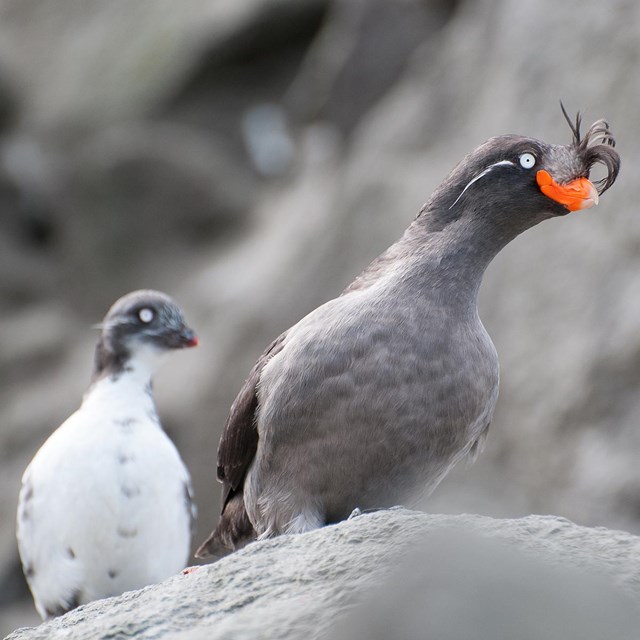 Crested Auklet
Crested AukletTheir distinctive tangerine odor and ornamental crest are attractive to their mates.
-
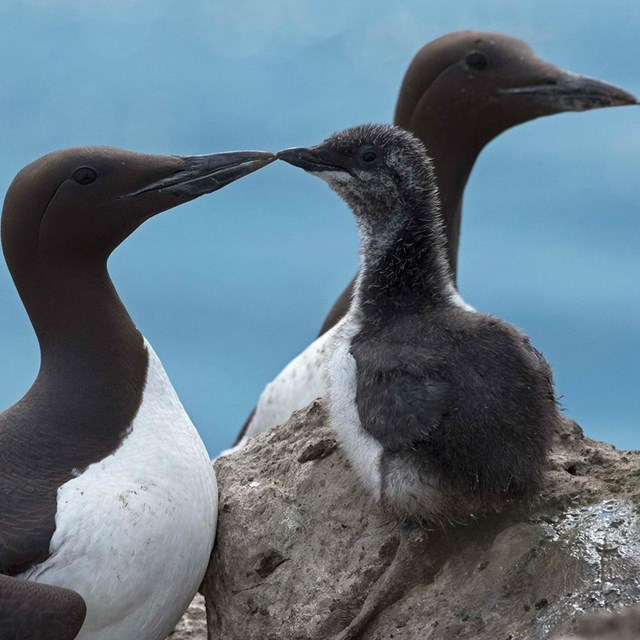 Common Murre
Common MurreIn winter Common Murres are found at sea, south of the ice edge, and on little islands in the Pacific.
-
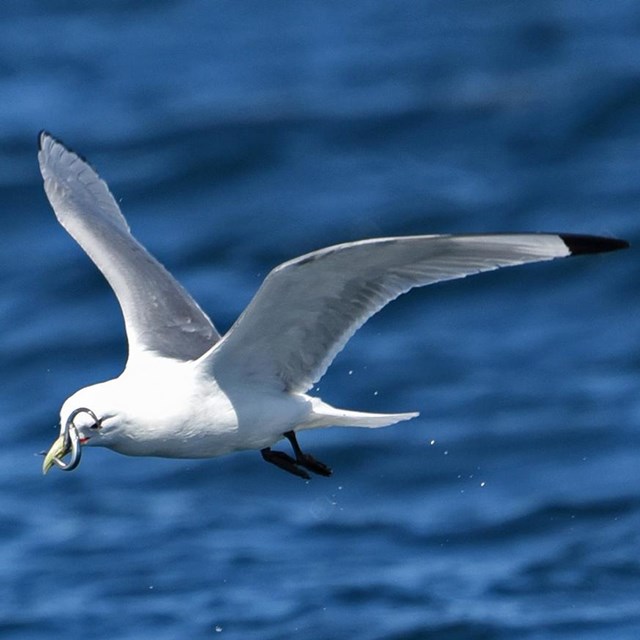 Black-legged Kittiwake
Black-legged KittiwakeThey nest on narrow cliff ledges, often barely wide enough to fit a nest and birds.
-
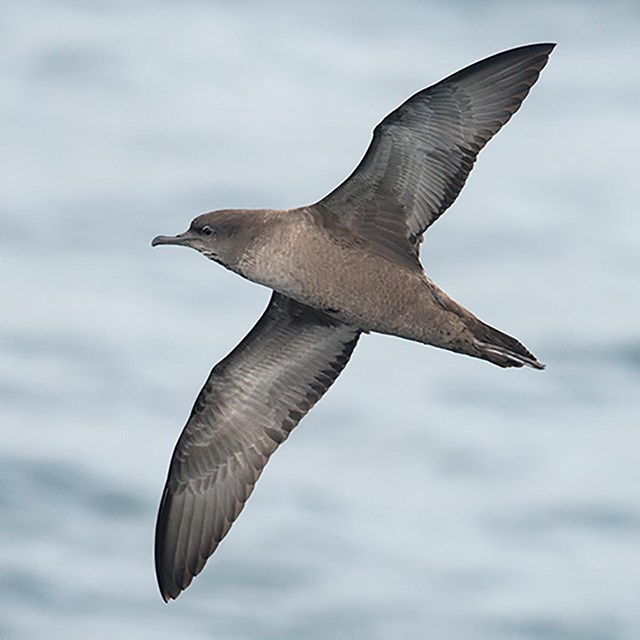 Short-tailed Shearwater
Short-tailed ShearwaterA trans-equatorial migrant known to make a 9,000 mile flight between Alaska and the Southern Hemisphere.
-
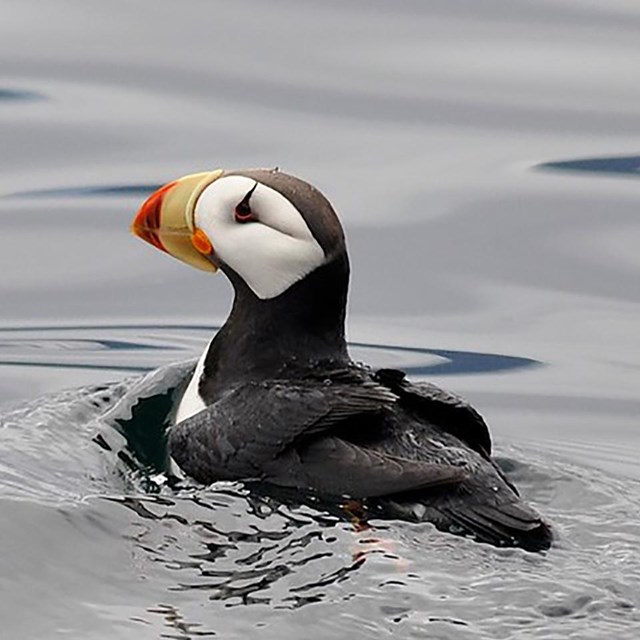 Horned Puffin
Horned PuffinEarly sailors named them "sea parrot" and "clown of the sea"
-
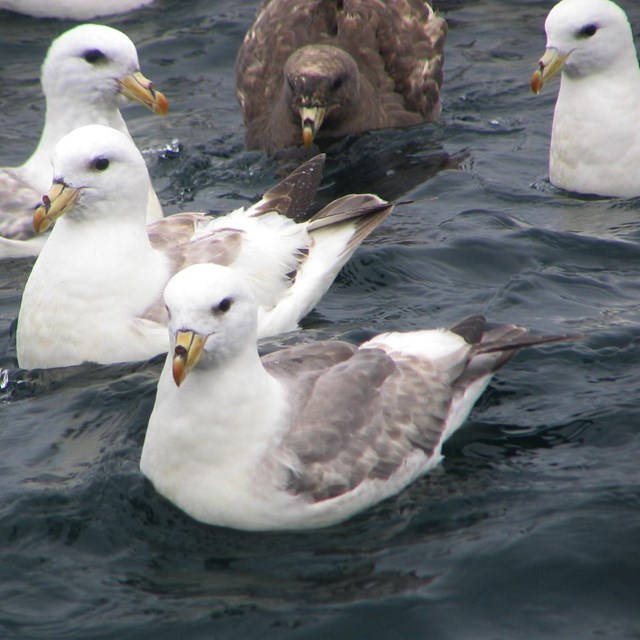 Northern Fulmar
Northern FulmarA truly pelagic species, the fulmar spends most of its life at sea and comes to land only to breed.
- Duration:
- 6 minutes, 22 seconds
In 2015 and 2016 hundreds of thousands of dead and dying Common Murres washed ashore in Alaska. In March of 2016, biologists with the National Park Service, US Fish & Wildlife Service, and US Geological Survey set out to Katmai National Park & Preserve to document the number of dead and dying seabirds there. This video explores Alaska's largest seabird die-off and the survey effort to document its extent at Katmai.
Partnerships
With help from Alaska Sea Grant, Local Environmental Observation (LEO) Network, Aleut Community of St. Paul Island, Kawerak, Alaska Migratory Bird Co-management Council (AMBCC), Alaska Department of Fish & Game, the Coastal Observation and Seabird Survey Team (COASST), the US Fish & Wildlife Service is tracking the number of birds involved, geographic area affected, and duration of the die-off event. To support these statewide monitoring efforts, NPS scientists will continue to track seabird mortality along and near park coasts for Bering Land Bridge National Preserve, Cape Krusenstern National Monument, Glacier Bay National Park and Preserve, Katmai National Park and Preserve, Kenai Fjords National Park, and Lake Clark National Park and Preserve.
The USFWS is coordinating with federal, state, tribal governments, and community members to report observations and collect carcasses for examination by the U.S. Geological Survey (USGS) National Wildlife Health Center. Of the 15 carcasses submitted, 12 were examined and all were emaciated and tested negative for Avian Influenza. Tissues collected during examinations will be analyzed for harmful algal bloom toxins by the USGS Alaska Science Center. Results of those analyses will be shared when they are available.
Media
- Seabird Die-offs in Alaska (usgs.gov)
- Why are birds and seals starving in a Bering Sea full of fish? The Seattle Times, November 3, 2019
- Mass die-offs of puffins in Alaska may be linked to climate change, Mongabay, May 31, 2019
- Common murres show small signs of a comeback from Gulf of Alaska to the Bering Sea, KBBI Alaska, February 2018
- Warm ocean water triggered vast seabird die-off, experts say, The Seattle Times, February 10, 2017
- A Marine Mystery: What’s Causing Seabird Die-Offs in Alaska? USGS, December 8, 2016
- Massive seabird die-off lines Whittier beaches with carcasses, Anchorage Daily News, September 28, 2016
- Common Murre Update: Growing awareness of seabird die-off thanks to citizen reporting, Alaska Fish & Wildlife News, April 2016
- Seabird die-off takes twist with carcasses in Alaska lake, Alaska Public Media, March 17, 2016
- Alaska bird die-off a puzzle, The Journal Gazette, March 12, 2016
- Thousands of dead seabirds found in Alaska in "unprecedented" die-off, Buzz Feed News, January 12, 2016
More about seabirds
Last updated: May 6, 2024
